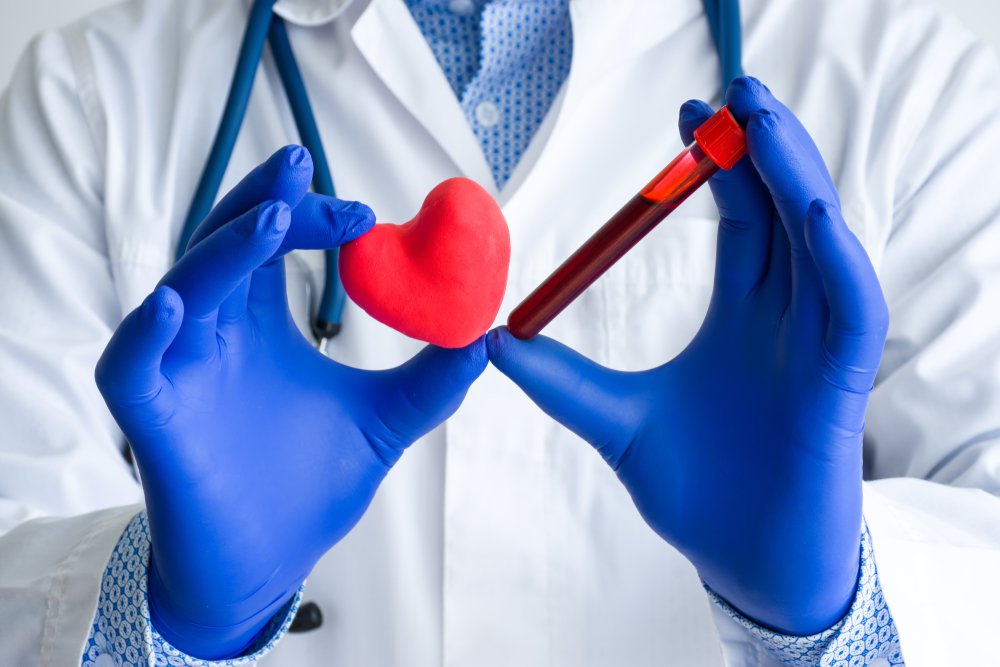 Understanding the lipids in your blood will help you to add years to your life. Cardiovascular disease is the number one killer in the United States. Having awareness of the fats in your diet and your blood will help you to avoid a stroke or heart attack. This includes getting evaluations of cholesterol (total, good, and bad), triglycerides, and their ratios in your blood.
Understanding the lipids in your blood will help you to add years to your life. Cardiovascular disease is the number one killer in the United States. Having awareness of the fats in your diet and your blood will help you to avoid a stroke or heart attack. This includes getting evaluations of cholesterol (total, good, and bad), triglycerides, and their ratios in your blood.
We have all heard of cholesterol. You may also know of the other parameters of your lipid panel like triglycerides, the “Good” HDL cholesterol, and “Bad” LDL Cholesterol. Cholesterol is a fat-soluble molecule that is essential for human life. It plays critical roles in the normal functioning of cells. It resides in cell membranes contributing to their fluidity. It acts as a precursor to steroid hormones like cortisol, testosterone, and estrogens. Cholesterol is a precursor to the synthesis of vitamin D in our skin and is an important component of bile that facilitates the absorption of fat soluble vitamins like A, D, E, and K.
Being that cholesterol is fat soluble it must be carried by proteins in the blood to keep it “in solution” so to speak. It is transported in the blood by those “lipoproteins” with our fat called triglycerides. The triglycerides are 3 fat molecules carried together with a glycerol molecule. Triglycerides are made from dietary fats and conversion of our dietary carbohydrate to fats by our liver. It is in lipoprotein particles like HDL and LDL that our cholesterol and triglycerides are carried.
When Low-Density Lipoprotein or LDL levels are high (hypercholesterolemia) there is a well-documented increased risk for premature cardiovascular disease like heart attack or stroke. Therefore, we call LDL-cholesterol the “Bad” cholesterol. LDL cholesterol can accumulate in the walls of your arteries and form what are called “plaques”. These plaques can lead to occlusion gradually over time or even rupture causing an acute occlusion that is considered a stroke in the brain vessels or a heart attack in the coronary vessels of the heart.
HDL or High-Density Lipoprotein cholesterol particles are considered the “good” cholesterol. Elevated HDL cholesterol has been correlated to a decreased risk of cardiovascular disease in epidemiological studies. HDL carries cholesterol away from the plaques and delivers it to the liver for disposal in the bile. Much clinical focus is on lowering LDL while maintaining or raising HDL. Although the literature suggests our major focus should be on lowering LDL.
Several factors lead to elevated LDL cholesterol levels. Our genetics play a huge role in this as apples don’t fall far from the tree. If your father or especially your mother had a heart attack or stroke at a young age (<50 years old) then you are likely at risk and should watch your cholesterol closely. In fact, in those families, doctors shoot for lower levels than the general population can have. These patients should start lipid lowering medications at a younger age if found to be distinctly elevated.
Your life-style including your activity level and diet play a significant role as well. Although the cholesterol you eat has not been shown to correlate well to the levels of LDL in your blood, the role of saturated fats and total cholesterol is still in question. Diets high in saturated fats and trans fats clearly elevate total cholesterol in the blood. It is often suggested that saturated fats should be kept low in the diet to reduce cardiovascular disease risk, while healthier polyunsaturated fats like the omega-3 fish oils should be predominant.
